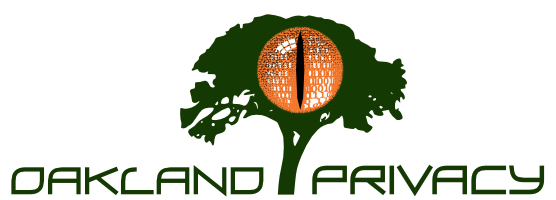
With the explosion of surveillance data being harvested across many different sectors, fusion centers were built to consolidate the multiple streams of surveillance data into information-sharing hubs that include local, state, federal, and private entities. Each state has at least a primary fusion center but can also have other regional fusion centers focused on major metropolitan areas within the state. In California, the primary fusion center is the California State Threat Assessment Center and the state also has regional fusion centers: NCRIC (Northern California), CCIC/STAC (Sacramento), LAJRIC (Los Angeles), OCIAC (Orange County), and SDLEC (San Diego).
Fusion centers have over 20+ years of operation and expansion while operating with little oversight. While fusion centers were initially created with the promise to improve public safety and analyze credible threats, over the years they have expanded their scope to include the monitoring and reporting of innocuous, lawful religious and political activities often undertaken by minority communities and protest groups.
- In 2009, One Texas fusion center released an intelligence report on the possibility of Muslim civil rights organizations and anti-war protest groups spreading Sharia law in the US actively encouraging local law enforcement to monitor the activities of these groups in their areas all because of these group’s increased calls for tolerance.
- On the other side of the political spectrum, another fusion center in Missouri released a report detailing the preference of “modern militia” movement members for third-party presidential candidates in a clear violation of civil liberties as it painted normal citizens exercising their first amendment rights as harboring ill intent towards the government.
- During the Black Lives Matter rallies in 2020, the Northern California fusion center released multiple warnings to over 14,000 law enforcement officers characterizing the rallies as dangerous with anticipated planned looting, threats of violence, and vandalism despite there being no specific threat information detailed in the reports.
All of these instances highlight the very real dangers of surveillance by fusion centers. Furthermore, because various entities – both government and non-government – are involved, the response has been that it’s near impossible to create an effective policy to regulate the activities of fusion centers. Moreover, the public is kept in the dark of funding and negotiations of operations of fusion centers, including when it comes to the murky deals the government makes with private surveillance companies. And while fusion centers were initially created to “prevent terrorism” – a broad and nebulous term – mission creep has quietly and rapidly expanded to include gathering data related to all kinds of activities whether criminal or not.
Among many of the questions currently left unanswered is how are the people running these centers currently defining what falls under the terrorism umbrella; how might a different administration after 2024 use fusion centers and what “criminal activities” would be prioritized; what new surveillance tech from the private sector is being deployed on the public by default in the name of safety? With inadequate oversight, unlawful investigations by these centers can target and restrict the civil liberties, free speech, and privacy of individuals across the U.S.
To shed light on some of these questions, this summer Oakland Privacy launched a research project to uncover the recent activities of California’s five fusion centers through public records. Specifically, we asked each of the five fusion centers – NCRIC (Northern California), CCIC/STAC (Sacramento), LAJRIC (Los Angeles), OCIAC (Orange County), and SDLEC (San Diego) – for records relating to providing support to local law enforcement agencies with “situational awareness” for special and/or large-scale events between September 2022 and July 2023. Our goal is to quantify how frequently California’s fusion centers received requests to provide situational awareness intelligence activities from local police departments during that time period.
The research team is made up of four members of Oakland Privacy, including two Berkeley undergrad students (at the inception of the project): Ashley Ambrosino, a senior at UC Berkeley in the Ethnic Studies department; David Fang, a fourth-year at UC Berkeley studying Data Science and Business, member of the ACLU campus chapter and a contributor to Oakland Privacy’s Public Records Act and FOIA guides; Gifford Usher who has experience in youth activist work and facilitating events focused on issues related to surveillance, privacy, and tech; and Yadi Younse, Oakland Privacy’s 2022 Fellow who has a background in technology and digital advocacy with experience in financial tech, political campaigning and conducted privacy related projects with ACLU and Consumer Reports. The research team is overseen by Mike Katz-Lacabe, Oakland Privacy’s research director and Tracy Rosenberg, Oakland Privacy’s advocacy director.
——————-
What we said we would do:
“The records requests will seek to obtain information on the measurable quantity of such requests to California fusion centers and identify the event types, surveillance tools, procedures, details of coordination, and event intelligence gathered as a result of these fusion center actions.”
What we specifically asked for in the PRR:
“Records relating to providing support to local law enforcement agencies with “situational awareness” for special and/or large-scale events between September 2022 and July 11, 2023
